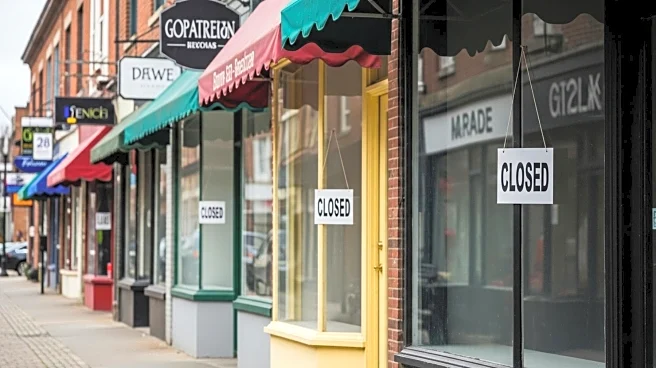What's Happening?
As the 2025 holiday shopping season approaches, the resale economy is becoming a significant factor in U.S. retail strategies. Recommerce, which involves the sale of pre-owned, refurbished, or overstock
goods, is projected to generate $64 billion in holiday revenue, according to Salesforce. This trend is driven by factors such as tariffs, inflation, and evolving consumer values, which are pushing shoppers towards pre-owned goods. The appeal of recommerce lies not only in cost savings but also in the distinctiveness and accessibility of products. Major brands like Lululemon, Madewell, and Nike are participating by offering used, reconditioned, or overstock products at discounted rates. This strategic approach allows retailers to maintain brand equity while attracting new customer segments, particularly Gen Z and Millennials.
Why It's Important?
The rise of recommerce represents a shift in consumer behavior and retail strategy, with significant implications for the U.S. economy. By embracing recommerce, retailers can tap into a growing market segment that values thrift and sustainability. This approach not only provides a revenue stream but also serves as a strategic pricing tool that avoids the pitfalls of blanket markdowns. For consumers, recommerce offers an opportunity to purchase high-quality goods at lower prices, aligning with their desire for value and authenticity. As more retailers adopt recommerce strategies, the industry could see a transformation in inventory management and sales tactics, potentially leading to increased profitability and customer loyalty.
What's Next?
Retailers are expected to test recommerce strategies during the upcoming holiday season, using it as a gauge for future efforts. This involves listing overstock and slow-moving products in 'like new' categories and creating dedicated sections for open-box or lightly used goods. Early returns from major shopping events like Black Friday and Cyber Monday will be quickly relisted to capture demand. Post-holiday campaigns may focus on 'Smart Finds' or 'Returned Favorites,' turning liquidation into a recommerce story. If successful, recommerce could become a permanent fixture in retail strategies, offering a sustainable and profitable way to manage inventory.
Beyond the Headlines
The recommerce trend also highlights broader cultural shifts towards sustainability and conscious consumption. As consumers increasingly prioritize environmental impact and resource efficiency, recommerce aligns with these values by promoting reuse and reducing waste. This shift could lead to long-term changes in manufacturing and retail practices, encouraging companies to design products with resale potential in mind. Additionally, the growth of recommerce platforms and technologies may spur innovation in logistics and inventory management, further integrating sustainability into the retail ecosystem.











